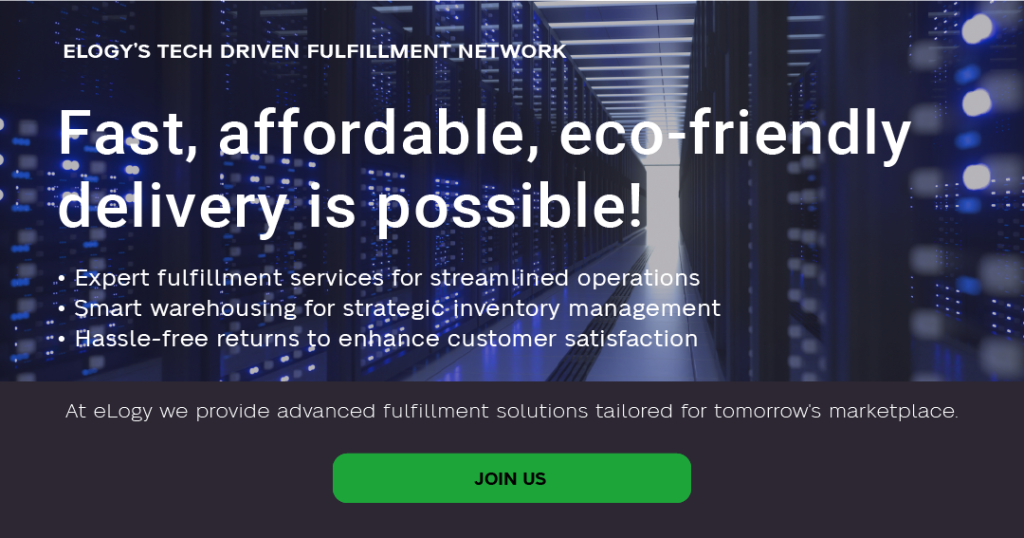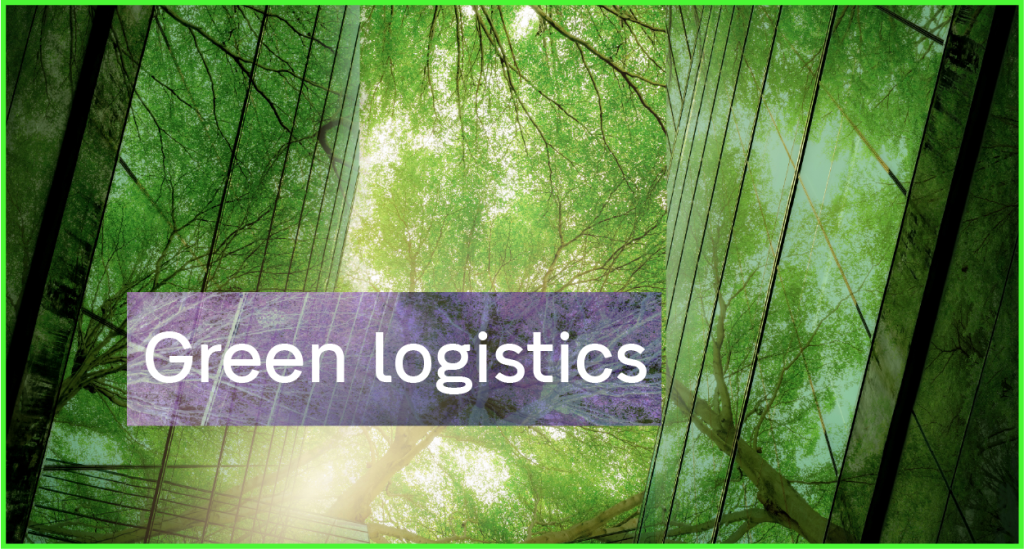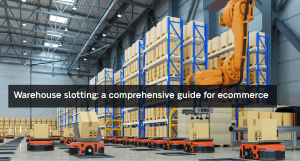Logistics is one of the industries where enhancements in efficiency and lowering emissions are required the most. Analysts predict that, with the current growth rate of consumer demand, emissions from transportation will constitute 60% of the total by 2050. However, the European Union’s goals for the years to come aim for a significant shift in direction, as evidenced by initiatives like the EU Corporate Sustainability Directive. Investing in new solutions and technologies to reduce waste and the ecological footprint of logistics operations not only safeguards the future of our planet, but also contributes to building more profitable and secure supply chains. Companies using green logistics have experienced cost savings and increased efficiency, key elements in retaining customers, who are growing more attentive to the impact of their shopping habits. Let’s find out all about green logistics and transportation!
What is green logistics
Green logistics refers to all practices aimed at reducing the environmental footprint of the logistics and delivery networks. This can be done by integrating advanced technologies like artificial intelligence, machine learning, and analytics, which ensure long-term profitability without compromising customer satisfaction.
Green logistics areas
Packaging
In this context, green logistics practices aim to reduce the environmental impact of product packaging by using recyclable and functional materials to pack and deliver products.
Optimising packaging by only using what is necessary for the product is not only important to reduce waste but is also essential to gain more storage space. Getting the most from pallets and packaging is a fundamental practice any time! It will result in structures that are less polluting and impactful and will eliminate the need to build additional facilities.
Warehousing
Emissions from logistics facilities account for about 6% of the total carbon footprint and 13% of emissions in the global logistics sector.
In this context, green logistics practices aim to implement solutions that improve and optimise internal warehouse processes, such as the energy consumption of internal systems, or the structure of facilities.
The main areas for intervention include:
Enhance energy efficiency
Implementing technologies that work with natural light, using systems to decrease energy consumption for heating or cooling warehouses, installing LED lights to reduce electrical consumption, emissions, and maintenance costs is effective in enhancing energy efficiency within the warehouse.
Automation
Robotics and automation are closely linked to sustainability. These solutions are able to handle operations at a larger scale, compared to traditional methods, while using less energy and making warehouse operations faster and more efficient.
Transport
The transport area, which currently accounts for about 7.7 tons of emissions per year, encompasses solutions related to transportation and the types of vehicles used for moving and delivering goods.
AI Route Optimization: this tool is a great green logistics example, because it is able to assess traffic or other slowdowns. Also, real-time route planning allows companies to increase delivery speed and minimise fuel consumption. This is useful to reduce time spent on the road, reduce air pollution, and also lower transport costs.
Low-emission fleet: this includes implementing a fleet of electric, biomethane, or hydrogen-powered vehicles.
Parcel lockers: if you easily want to support green logistics practices while addressing several logistics challenges, consider implementing parcel lockers among your delivery options. They reduce missed deliveries, minimise emissions by eliminating the need for multiple delivery attempts, and provide a flexible option for your customers. This streamlines the last-mile delivery and provides a superior shopping experience.
On-Demand Delivery: did you know that missed deliveries are major contributors to CO2 emissions because they force carriers to carry out multiple delivery attempts and spend more time on the road? On Demand Delivery (ODD) is a solution that allows customers to choose exactly when and where their products are delivered, improving first-attempt delivery rate and their shopping experience.
Load optimization: this practice refers to making the most of vehicle or container space available to achieve optimal load capacity.
Drones and automated vehicles: fully automated logistic networks are still a few years away but innovation is fast in this field, and digital automation is at the heart of many eco-friendly solutions. Delivery drones and automated vehicles could be the future of delivery logistics.
Supply chain
This area refers to identifying and integrating advanced technological solutions to enhance efficiency of logistics supply chain processes and make them greener.
Transparency
Ensuring visibility, transparency, and real-time data among all supply chain areas enables companies to prevent mistakes, plan deliveries, and avoid supply chain disruptions, enhancing efficiency of all operations.
In this context, while marketing drives demand, the supply chain is responsible for fulfilling product distribution to consumers, ensuring that customers receive their goods in the agreed time and manner.
Encourage customers to think circularly
Ecommerce and returns can’t unfortunately be separated but there are ways to make reverse logistics processes more efficient. The circular economy model encourages the sharing, repairing, refurbishing, and recycling of products and materials for as long as possible to minimise waste. Offer your customers more choices to manage their returns!
Challenges of green logistics
Challenges in green logistics often stem from the misconception that sustainability compromises efficiency. Many people believe that adopting green logistics practices into supply chain operations might lead to increased operational costs and reduced speed. It is not true! There is an initial investment to be made for the right technological solutions but these will enhance the efficiency of your operations, while contributing to a greener planet. Moreover, high investment costs can be easily bypassed by partnering with a green third-party logistics provider.
Transform your logistics: choose eLogy
Outsourcing your logistics to a third party with ecological credentials like eLogy is an all-in-one solution to reduce carbon emissions while enhancing logistics and delivery performance. Your delivery vehicles greatly contribute to global pollution, but there are several measures you can take to lessen their impact, and partnering with eLogy will become a strategic asset!
-Smart warehousing: our strategically located warehouses allow you to ship from locations closer to your customers, significantly reducing travel distances and emissions.
-Access to cutting-edge technology: embracing automation within your operations streamlines processes, from picking to packing, to final delivery enhancing efficiency and reducing energy consumption.
-Warehouse optimization: guided by advanced analytics, demand forecasts and reporting you can build strategies based on real data. Moreover, space is always used effectively, energy consumption is optimised, inventory is managed smartly, and routes are planned optimally. This comprehensive approach not only lowers your environmental footprint but also allows you to save costs significantly!
Conclusion
Environmental pressure, the impact of new global regulations, the rise of consumer demand, and related operational costs are only some of the key challenges that companies will need to face in the coming years to optimise their supply chains.
Those companies who invest in advanced technologies will differentiate themselves and be recognised as forward-thinking leaders, not only because they enhance their operational performance but also because they work to build a sustainable, eco-conscious working environment.





